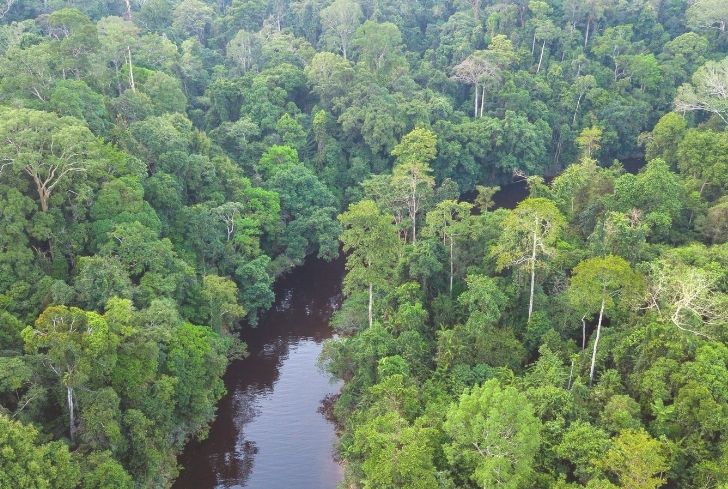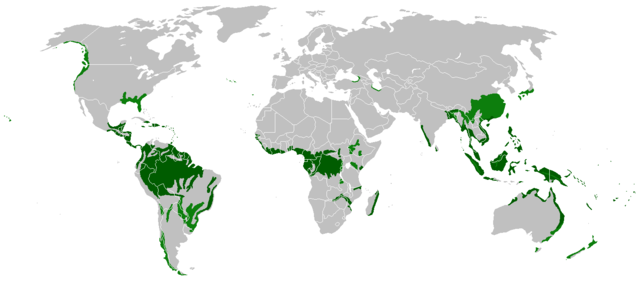 Recently, a study was done to analyze the effects of global warming on tropical rainforests.
Recently, a study was done to analyze the effects of global warming on tropical rainforests.
In particular, this study looked at what happens when the leaves in tropical tree canopies experience extreme temperature increases.
The results indicated that about 0.01% of the leaves could actually get too hot to photosynthesize!
While this is a very small percentage, it provides an important clue about the possible consequences that the world may face should it warm 4 degrees Celsius or more. It also sparks the question, why do tropical forests matter?
Why are the Tropics so Important?
Tropical forests are found in South America, Africa, Southeast Asia, and Australia.
They are home to 50 million people, and the livelihoods of more than a billion people depend on them in some way. Nearly 78% of the world’s plant and animal species are found in the tropics.
 The Amazon rainforest in particular is famous for its incredible biodiversity, housing about 280 tree species per hectare.
The Amazon rainforest in particular is famous for its incredible biodiversity, housing about 280 tree species per hectare.
Trees perform very important functions for our planet. They transpire or “breathe out” water that is taken into the atmosphere to produce rain clouds. Trees produce oxygen and act as a carbon sink, meaning they remove excess carbon dioxide from the atmosphere. Combined, tropical forests store about 25% of the world’s carbon.
No wonder scientists are so interested in studying the human impacts on tropical forest health!
Seeing the Forest for the Leaves
In the study, scientists used the thermal satellite sensors on the International Space Station to study local temperatures. They also performed ground tests in which they actually attached thermal sensors to analyze the effect of increasing temperatures on individual leaves.
When the data was gathered, the scientists developed a computer model to predict how forests may be affected by increasing temperatures. Researchers found that in about 0.01% of cases, leaves reached a critical temperature of 46.7 ℃ (116.1 ℉), the point at which photosynthesis begins to slow down.

The consequences of disturbing this important cycle could be serious. Scientists are aware that photosynthesizing leaves act to lower air temperatures. So if a tree loses the ability to photosynthesize due to intense heat, it will affect air temperatures around neighboring trees and their processes may also be inhibited. As a result, the trees may eventually die.
Scientists are unsure of how large a role photosynthesis slow-down will play as global temperatures continue to rise, and they don’t yet know how many types of trees will adapt to the higher temperatures.
What the researchers did determine, is that the average local air temperatures must rise at least 4 ℃ (7.2 ℉) before negative effects will occur.
What are the Takeaways?
The most important takeaway is that a 4 ℃ (7.2 ℉) warming of average temperatures poses a serious threat to tropical forests and by extension the world.
This is a scenario that many researchers think is unlikely to happen, as there is already a push to switch to renewable energy so as to decrease carbon emissions. While tropical forests are incredibly resilient and adaptable, they also need to be given the chance to heal from deforestation and climate change.
The recent findings regarding tropical forests should motivate governments and people to redouble their efforts in lowering emissions to limit global warming.
Sources: CNN, Grist, Scientific American, rainforesttrust.org, Global Witness











